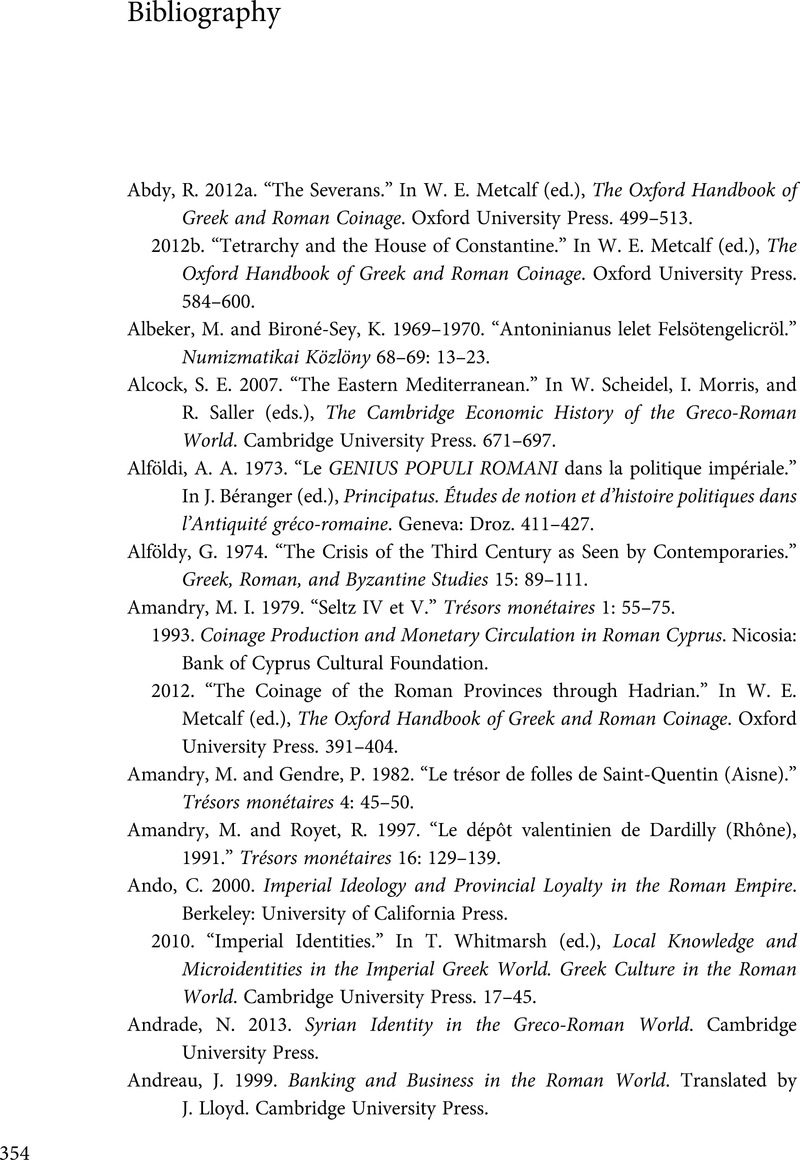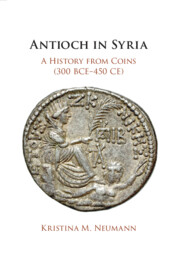Book contents
- Antioch in Syria
- Antioch in Syria
- Copyright page
- Dedication
- Contents
- Figures
- Tables
- Acknowledgments
- Chronology of Rulers
- Note for the Reader
- Abbreviations
- Introduction
- 1 Counting Change
- 2 Imperial Beginnings (300–129 BCE)
- 3 Imperial Transitions (129–31 BCE)
- 4 Provincial Negotiations (31 BCE–192 CE)
- 5 Imperial Creations (192–284 CE)
- 6 Imperial City (284–450 CE)
- Conclusion
- Book part
- Bibliography
- Index
- References
Bibliography
Published online by Cambridge University Press: 20 August 2021
- Antioch in Syria
- Antioch in Syria
- Copyright page
- Dedication
- Contents
- Figures
- Tables
- Acknowledgments
- Chronology of Rulers
- Note for the Reader
- Abbreviations
- Introduction
- 1 Counting Change
- 2 Imperial Beginnings (300–129 BCE)
- 3 Imperial Transitions (129–31 BCE)
- 4 Provincial Negotiations (31 BCE–192 CE)
- 5 Imperial Creations (192–284 CE)
- 6 Imperial City (284–450 CE)
- Conclusion
- Book part
- Bibliography
- Index
- References
Summary

- Type
- Chapter
- Information
- Antioch in SyriaA History from Coins (300 BCE–450 CE), pp. 354 - 394Publisher: Cambridge University PressPrint publication year: 2021



